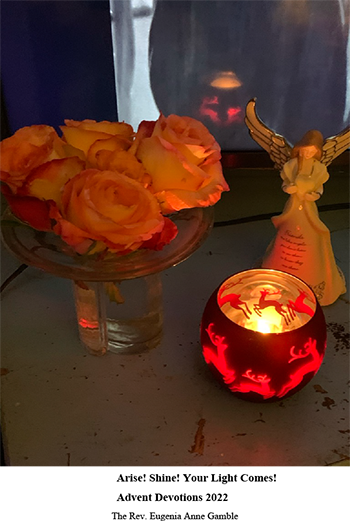Mark 9:2-9 - The Transfiguration of the Lord
Mark 9:2) Six days later, Jesus took with him Peter and James and John, and led them up a high mountain apart, by themselves. And he was transfigured before them, 3) and his clothes became dazzling white, such as no one on earth could bleach them. 4) And there appeared to them Elijah with Moses, who were talking with Jesus. 5) Then Peter said to Jesus, “Rabbi, it is good for us to be here; let us make three dwellings, one for you, one for Moses, and one for Elijah.” 6) He did not know what to say, for they were terrified. 7) Then a cloud overshadowed them, and from the cloud there came a voice, “This is my Son, the Beloved; listen to him!” 8) Suddenly when they looked around, they saw no one with them any more, but only Jesus. 9) As they were coming down the mountain, he ordered them to tell no one about what they had seen, until after the Son of Man had risen from the dead.
Issues in Mark: Mark spends nearly 1/3 of his Gospel dealing with the events leading up to and including the death and resurrection of Jesus. This passage occurs in the central section that witnesses to the amazing power of God in Jesus and the disciples inability to grasp what was happening to them. By the time Mark writes, (most believe it was the earliest gospel) many are claiming that Jesus could not have been Messiah because, Messiah would never have had to suffer the horrible execution that Jesus did. Mark sees this story as evidence to refute that claim. For Mark, the mountain of glorious transfiguration and the mountain of horrible crucifixion were connected and necessary.
The Mountain: Tradition has it that this event took place on Mt. Tabor in lower Galilee, although most scholars doubt that. Mt. Tabor was a low mountain (1,850’), fortified and virtually inaccessible in Jesus’ day. More likely, the mountain was Mt. Hermon, near Ceasarea Philippi (9,100”). More important than location, is the fact that mountains were places where significant acts of God took place. Mountains were where God’s power was often revealed. It was on Mt. Sinai that the gift of the Law was given. It was on Mt. Calvary that the gift of salvation was given. On the mount of Transfiguration we look in both directions at once, holding both gifts together as holy and necessary.
An Epiphany: Stories that include a sudden manifestation of the divine are called epiphanies. They often include elements such as clouds, bright lights and fear and confusion on the part of the human witnesses. This incident is clearly reminiscent of the story of Jesus’ baptism when the Holy Spirit descended upon him, named him Messiah and gave him his mission.
Elijah and Moses: There are many Old Testament allusions in this short passage. Elijah was the great 9th century BC prophet whose return to earth was believed to be a signal of the coming Day of Salvation. During Passover celebrations the door is always cracked open and a chair is left empty for Elijah when he returns. Moses was without doubt the greatest and most revered figure in Hebrew Scriptures. It was Moses who led the people from slavery in Egypt and it was Moses to whom God entrusted the sacred gift of the Law on Mt. Sinai that would establish the boundaries of relationship between God and the people.
Tabernacles/Tents/Booths/or Dwellings: Peter may have had in mind the huts of intertwined branches which were put up to celebrate the Feast of Tabernacles or Booths, an important religious festival which commemorated Israel’s time in the wilderness. He may also have had in mind the Tent of Meeting that was the place where God dwelled and where the people went to encounter God.
The Son of Man: This phrase is used frequently in Mark. Its’ exact meaning is far from clear. It may be a messianic title or it may be a way that Jesus referred to the human nature of the Son of God. It also may simply have been the way that Jesus referred to himself in the third person.
Word Study
Vs. 2 – Peter, James and John – the inner circle of the 12 disciples. These were the ones Jesus took with him to the healing of Jairus’ daughter.
Transfigured – Gk – metamorphothe – means to change form. This word indicates more than a momentary change. It means a permanent, profound change. It is the same word that Paul uses in
Romans 12:2 “Be not conformed to this world, but be transformed by the renewing of your mind.”
Before them – literally, in their sight.
Vs. 3 – clothes – outer garment or cloak
Dazzling – exceedingly radiant, a word for glistening like highly polished metal. The last clause of this verse could be translated “in a way that no human launderer had the power to bleach them.” Mark uses the word dynamis (power) here. It is a very important word in Mark and refers to the power of God at work in a situation in a way that no other power can work.
Vs. 5 – good – beautiful or excellent
Vs. 7 – cloud – clouds in the Hebrew Scriptures always signal the presence of God.
This is my Son – this phrase indicates the Messiah. It was much later that we began to think in terms of the incarnation and the Trinity.
Listen – always implies to obey. It is not possible for believers to truly hear from God and not act accordingly.
Vs. 9 – risen from the dead – Literally, “until his corpse stands up.” This phrase clearly confounded Peter, James and John. They would have had no clear understanding of an individual rising from the dead. There was, as a result of Daniel’s prophecy, a notion that all the faithful would be raised together as a community at the Day of the Lord, but even that was a difficult thing for them. There was nothing in their past or their theological tradition to prepare them for Easter. They were totally confounded.
Questions for Personal Reflection
1. Has there ever been a time when you felt that you were especially in the presence of God? Is there a special spot where you feel close to God?
2. How do you tend to handle confusing situations? How do you try to gain insight?
3. What are the things, people or situations that are most difficult for you to let go of?
4. What does this passage suggest about how to handle good and bad times in life?
5. In what ways do you think that the church functions as the holder of sacred mysteries?



